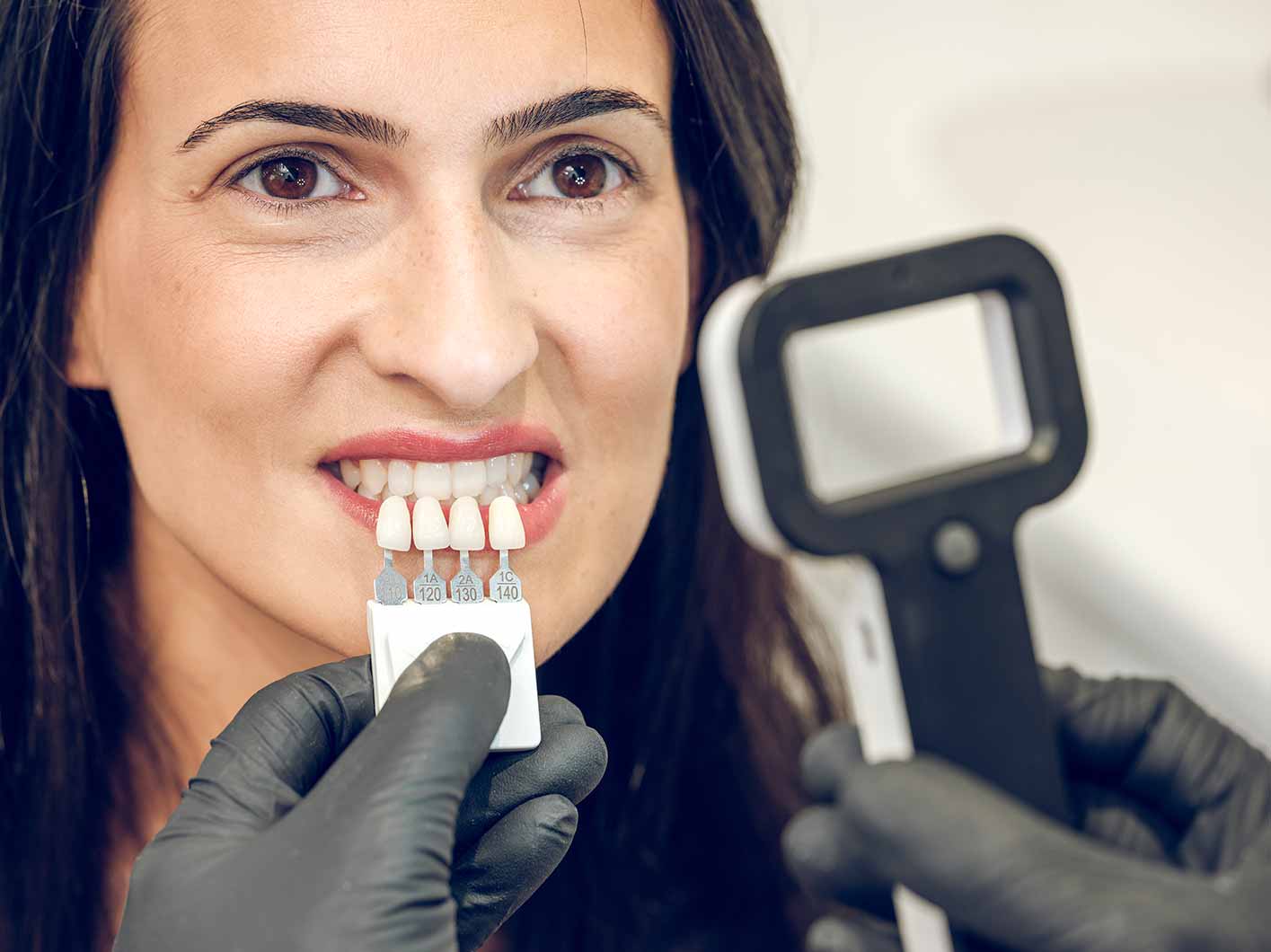
Porcelain laminates are thin porcelain layers applied to the front surface of teeth. They are used to correct the color, shape, and arrangement of teeth, hide fractures, or close gaps. Laminates provide a natural appearance and durability similar to natural teeth. It is a preferred method to achieve aesthetically excellent results.
The porcelain laminate treatment is generally carried out through the following steps:
- Evaluation and Planning: Your dentist evaluates the patient’s teeth and determines aesthetic goals. A treatment plan is created considering the suitability of the teeth and the patient’s needs.
- Preparation: Before starting the porcelain laminate application, a very thin amount of tooth structure (approximately 0.5-1.0 mm) is removed from the front surfaces of the teeth. This step allows for the proper placement of porcelain laminates.
- Dental Impression: After the teeth are prepared, the dentist takes an impression to create a mold. These impressions are used for the laboratory to create custom porcelain laminates.
- Temporary Laminate Application (Optional): While the porcelain laminates are being prepared in the laboratory, temporary laminates can be placed on the patient. These temporary laminates can be used temporarily to meet the patient’s aesthetic and functional needs.
- Porcelain Laminate Application: Once the porcelain laminates arrive from the laboratory, the dentist places these laminates on the patient’s teeth appropriately. Laminates are selected to match the natural tooth color and are bonded.
- Shaping and Polishing: After the laminates are in place, the dentist shapes and polishes them to achieve an aesthetically pleasing appearance.
Porcelain laminates are made from thin and durable porcelain layers, providing an excellent fit with the teeth. This results in a natural appearance, enhancing the smiles of patients aesthetically.
Porcelain laminate treatment is an effective option for correcting discolorations, cracks, wear, gaps, and slight misalignments in teeth. However, it may not be suitable for every patient. Consultation with your dentist will help determine the most appropriate aesthetic dental treatment option for you.

